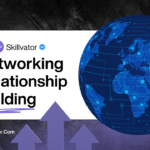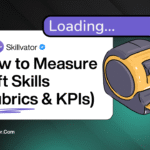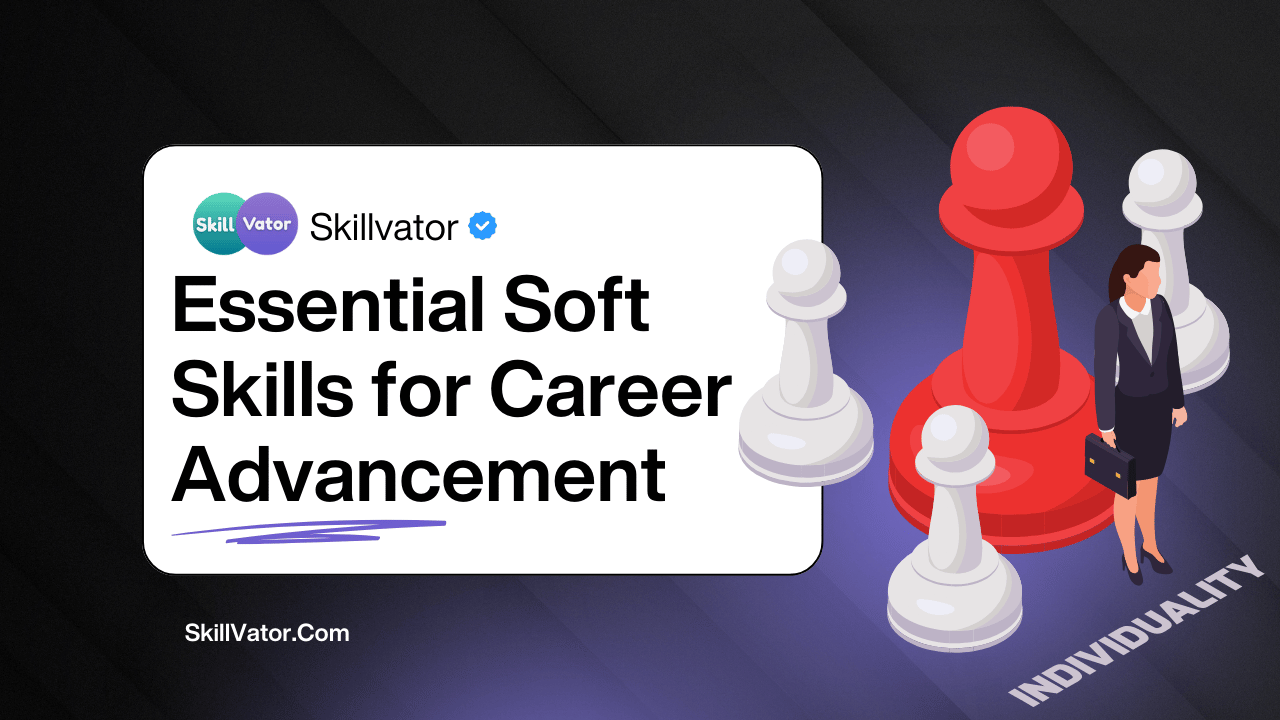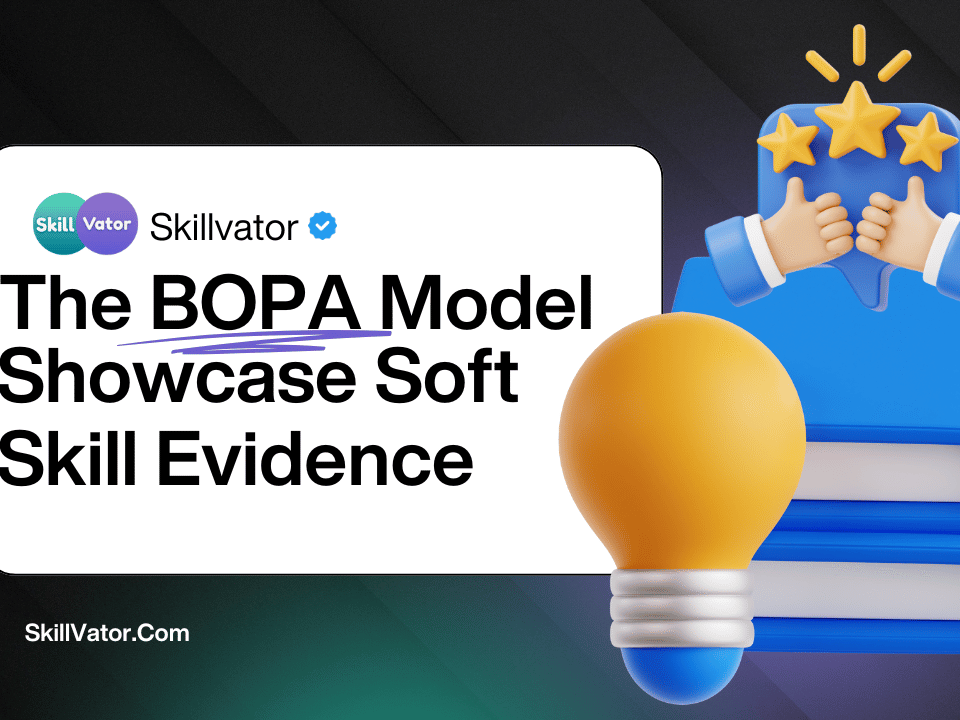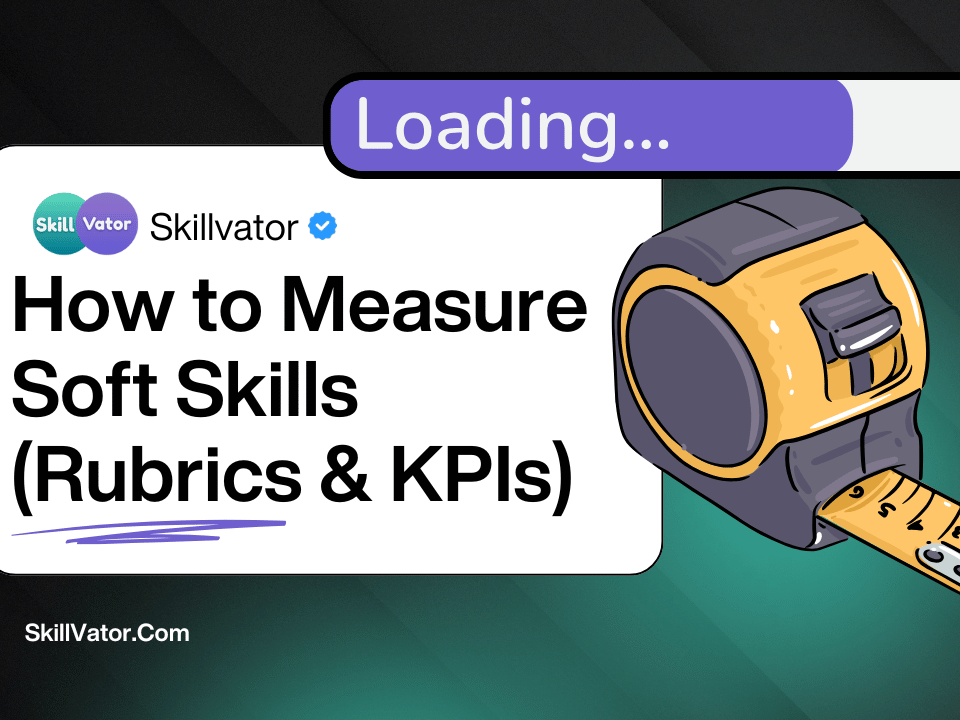Master the soft skills employers hire and promote for—communication, teamwork, adaptability, leadership, and problem-solving—with practical tools and examples. this article about Soft Skills for Career Advancement , so if you want to have a better Soft skills bare with us.
Soft skills—communication, teamwork, adaptability, leadership, problem-solving—are the engines of career growth. This pillar shows you: what each skill really means in modern workplaces, how to measure and improve it, how to showcase it on resumes & LinkedIn, and how to prove it in interviews. Includes rubrics, examples, and weekly practice plans. stay with Skillvator
What Are Soft Skills—and Why They Drive Promotions
Soft skills (also called workplace skills, power skills, or human skills) are the behaviors and interpersonal capabilities that enable you to create impact with others—regardless of role or industry. When hiring managers choose between similar technical profiles, emotional intelligence (EQ), collaboration, and clear communication are often the tie-breakers. For promotions, leaders look for people who influence outcomes, reduce friction, and elevate team performance.
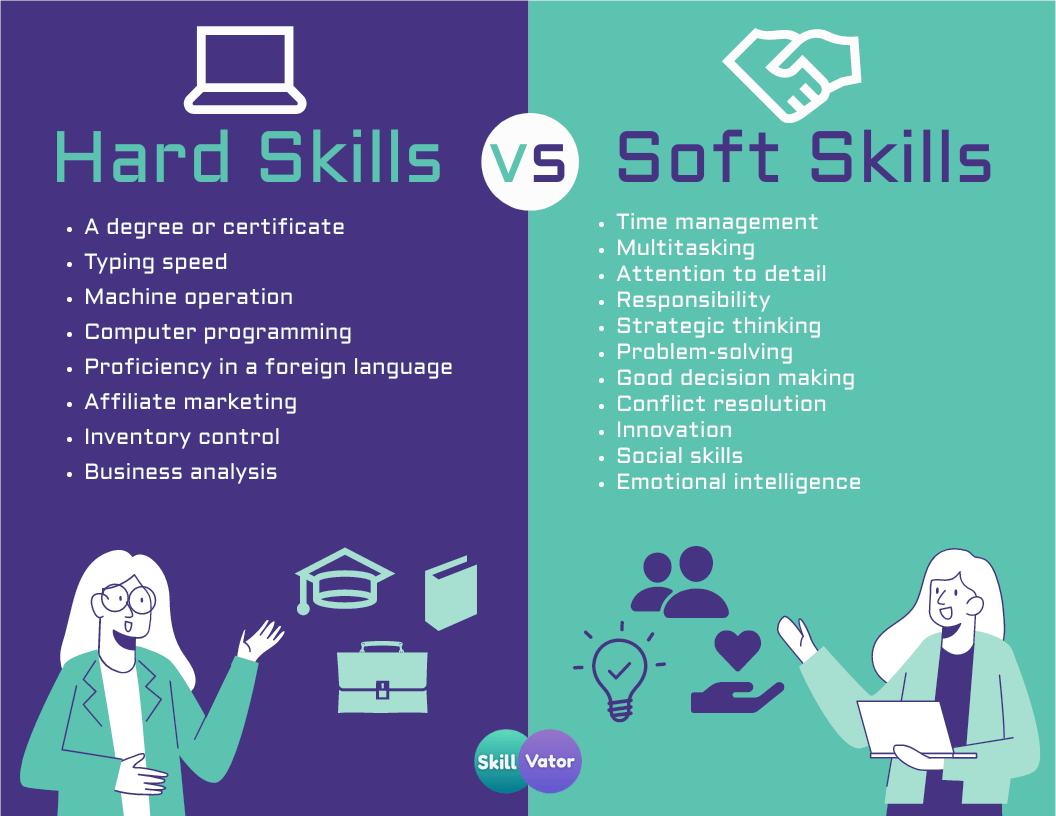
The Five Pillars of Career Soft Skills
A) Communication (Clarity, Brevity, Audience Fit)
What it is: Translating ideas into messages others can act on—across email, meetings, async docs, presentations, and stakeholder updates.
Key behaviors
-
Tailors message to audience (exec, peer, customer, cross-functional)
-
Uses structure (e.g., SCQA: Situation–Complication–Question–Answer)
-
Writes action-oriented subject lines & summaries
-
Confirms shared understanding (recaps, next steps, owners, deadlines)
Micro-habits
-
Start messages with the decision/question first.
-
End every meeting with: “In one minute: who does what by when?”
-
Use readable formatting: bullets, headers, 1 idea per paragraph.
Quick resume phrasing
-
“Presented quarterly product updates to execs; secured approval for 3 initiatives, accelerating roadmap by 6 weeks.”
Teamwork & Collaboration (Trust, Shared Goals, Constructive Conflict)
What it is: Working with others to deliver outcomes that no single person can.
Key behaviors
-
Clarifies roles (RACI), aligns on goals, shares context early
-
Practices psychological safety (invites dissent, credits others)
-
Surfaces risks early; disagrees and commits after decisions
Micro-habits
-
Begin projects with a 1-page brief: goal, scope, metrics, owners.
-
In standups, call out dependencies you might block or need.
Quick resume phrasing
-
“Co-led cross-functional launch with Sales & Ops; reduced handoff errors 32%.”
Adaptability (Learning Velocity, Change Resilience)
What it is: Adjusting approach when priorities shift, tools evolve, or markets change.
Key behaviors
-
Re-prioritizes with data; updates stakeholders quickly
-
Reframes setbacks into experiments; uses post-mortems to learn
-
Upskills in new tools/processes rapidly
Micro-habits
-
Keep a “Change Log” of pivots you handled and lessons learned.
-
Adopt a weekly learning hour for new tools or domain knowledge.
Quick resume phrasing
-
“Adapted to new CRM in 3 weeks; created team SOPs, cutting onboarding time 50%.”
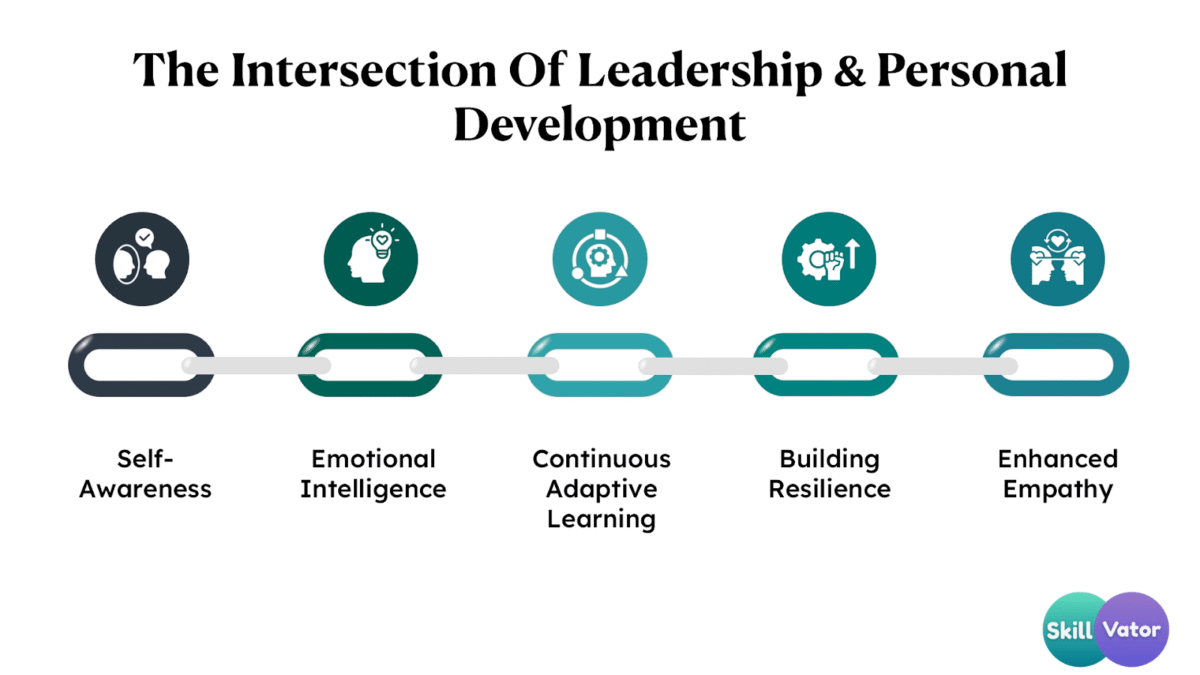
Leadership (Influence, Ownership, Development of Others)
What it is: Moving people and resources toward a worthwhile goal—with or without a manager title.
Key behaviors
-
Sets clear goals and guardrails; creates focus
-
Coaches peers; delegates with context; removes blockers
-
Manages up and across; communicates trade-offs and risks
Micro-habits
-
Use the SBI model (Situation–Behavior–Impact) for feedback.
-
Hold a 15-minute weekly “office hours” for your team or project.
Quick resume phrasing
-
“Mentored 4 juniors; two promoted within 12 months; team NPS +18.”
E) Problem-Solving (Framing, Analysis, Action)
What it is: Defining the right problem, evaluating options, executing, and learning.
Key behaviors
-
States the problem crisply; articulates constraints & success metrics
-
Explores options (cost/benefit), tests small, scales fast
-
Documents decisions for future learning
Micro-habits
-
Write a 1-page decision doc: problem, options, pros/cons, decision, owner, metric, review date.
-
Use pre-mortems: “If this failed in 3 months, why?”
Quick resume phrasing
-
“Reduced churn 12% by identifying onboarding friction and piloting in-app tutorials.”
How to Measure Soft Skills (Rubrics & KPIs)
Competency Rubric (1–5 Scale)
| Skill | 1 – Novice | 3 – Proficient | 5 – Expert |
|---|---|---|---|
| Communication | Vague, unstructured | Clear, structured, audience-aware | Persuasive storyteller; influences exec decisions |
| Teamwork | Works in silos | Coordinates roles & timelines | Orchestrates cross-functional outcomes; builds trust |
| Adaptability | Resists change | Adjusts with guidance | Anticipates change; designs resilient processes |
| Leadership | Waits for direction | Owns outcomes; coaches peers | Multiplies others; drives strategy & culture |
| Problem-Solving | Jumps to solutions | Frames problems, tests options | Scales repeatable solutions; builds learning loops |
Learn practical ways to measure soft skills using rubrics, KPIs, and real workplace examples. Discover how organizations track communication, teamwork, and leadership effectively.
👉 Read: How to Measure Soft Skills (Rubrics & KPIs)
Quantifiable indicators
-
Communication: email reply quality (manager rating), meeting recap rate, stakeholder satisfaction
-
Teamwork: on-time cross-functional milestones, dependency lead time
-
Adaptability: time-to-adopt new tool/process, post-mortem action close rate
-
Leadership: mentee progress, team engagement, throughput uplift
-
Problem-Solving: time-to-resolution, defect recurrence, ROI of initiatives
How to Showcase Soft Skills on Your Resume & LinkedIn
Resume (ATS-friendly) checklist
-
Use action verbs + metric + business outcome.
-
Mirror target job keywords (communication, collaboration, stakeholder management, change management, root cause analysis).
-
Place your impact bullets in the top 3–5 lines of each role.
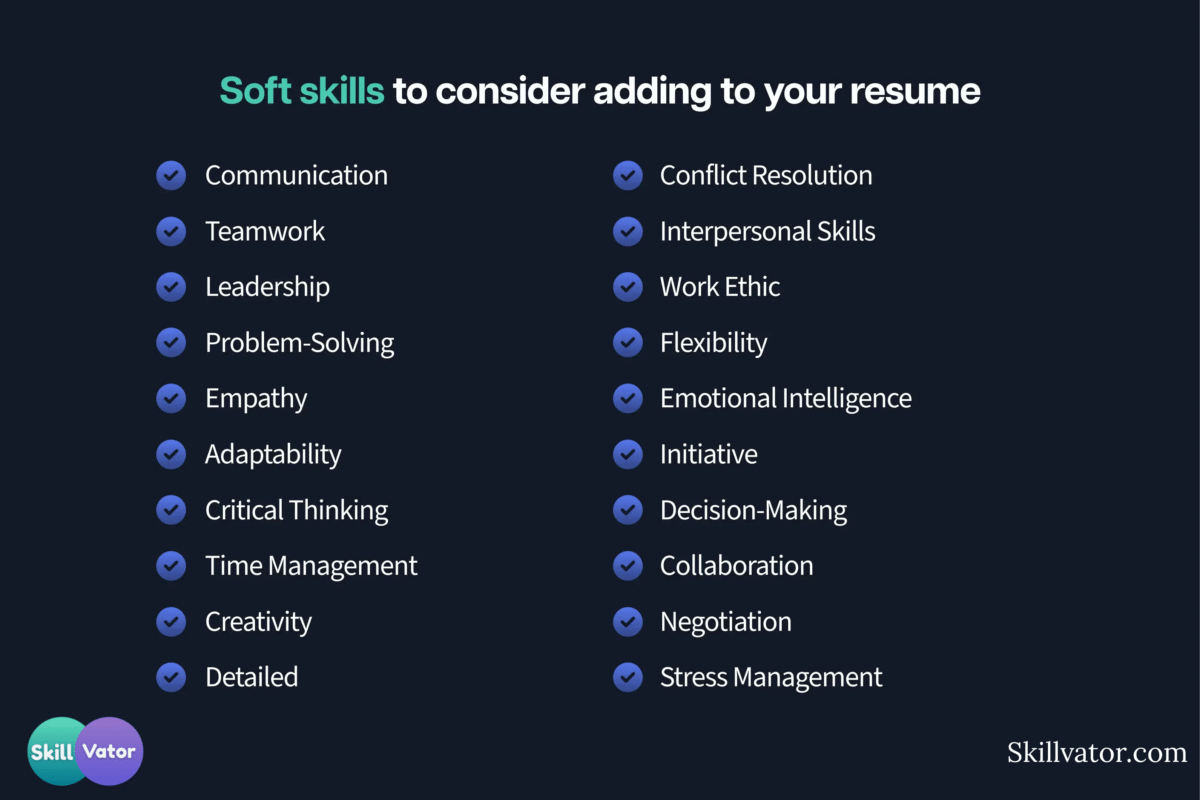
Example bullets
-
Communication: “Authored client-facing playbooks; reduced onboarding questions 40%.”
-
Teamwork: “Partnered with Data & Sales to redesign pipeline; forecast accuracy +14%.”
-
Adaptability: “Reprioritized roadmap during supply shock; protected 92% of revenue.”
-
Leadership: “Led 8-person squad; shipped 6 releases/quarter; cycle time –22%.”
-
Problem-Solving: “Eliminated bottleneck in QA; defects in production –37%.”
LinkedIn profile enhancements
-
Headline: include a soft-skill value phrase (e.g., “Project Manager | Cross-functional delivery | Stakeholder alignment”).
-
About: 3–5 quantified wins mapped to the five soft skills.
-
Featured: link decision docs, talks, templates that prove your skills.
-
Recommendations: ask peers/managers to cite a specific behavior (“clear briefs,” “coaching,” “root cause analysis”).
For get better information read this full blog : The Ultimate Guide to a Resume building
Interview Signals: Questions & Strong Answers
Behavioral prompts & what interviewers listen for
| Skill | Sample Question | What Great Answers Include |
|---|---|---|
| Communication | “Tell me about a time you had to simplify a complex idea.” | Audience framing, structure (SCQA), outcome/decision |
| Teamwork | “Describe a conflict within a team and how you resolved it.” | Early risk surfacing, curiosity, mutually beneficial solution |
| Adaptability | “When did priorities change suddenly?” | Re-prioritization logic, stakeholder updates, lesson learned |
| Leadership | “How have you developed others?” | Coaching method, growth outcomes, repeatable cadence |
| Problem-Solving | “Walk me through a tough problem you solved.” | Problem framing, options considered, metrics, iteration |
STAR blueprint (short)
-
S: “Quarterly pipeline accuracy was off by 20%.”
-
T: “Improve forecast to within ±5%.”
-
A: “Aligned Sales & Ops definitions; built weekly review; cleaned data.”
-
R: “Accuracy improved to ±4% in 2 cycles; leadership adopted process org-wide.”
Manager vs. Individual Contributor: What Changes
| Dimension | Managers (People/Project Leaders) | Employees (ICs) |
|---|---|---|
| Communication | Executive updates, trade-offs, business impact | Task clarity, status, risks, asks |
| Teamwork | Cross-functional orchestration, conflict mediation | Reliable execution, proactive dependency management |
| Adaptability | Portfolio reprioritization, change narrative | Personal workflow pivots, rapid learning |
| Leadership | Coaching, delegation, culture shaping | Ownership without authority, peer mentoring |
| Problem-Solving | Systemic root causes, scalable solutions | Localized issues, rapid experiments |
Tip: If you’re an IC eyeing promotion, start documenting how your collaboration, coaching, and problem-solving improved team outcomes—not just your own tasks.
Pitfalls & Fixes (Quick Wins)
| Pitfall | Why It Hurts | Fix (Today) |
|---|---|---|
| Long emails without an ask | Buries the decision | Open with the question, close with owners & deadlines |
| “I’ll just do it myself” | Kills scale & trust | Share a mini-brief; delegate with context |
| Waiting for perfect info | Delays value | Pilot a small test; set a review date |
| Feedback as opinion | Creates defensiveness | Use SBI: Situation–Behavior–Impact, then a request |
| Solving the wrong problem | Wastes cycles | Write a 1-pager: problem, success metric, options |
30-Day Practice Plan (Realistic & Repeatable)
Goal: Move one level up on the competency rubric in at least two skills.
Week 1 — Communication
-
Convert 3 long emails into 5-line executive summaries.
-
End every meeting with a 60-second recap (owner, deadline, next step).
-
Deliverable: A “Before/After” doc of one improved message.
Week 2 — Teamwork & Collaboration
-
Kick off a cross-team task with a 1-page brief (goal, scope, owners).
-
Identify one dependency risk and surface it early with a solution.
-
Deliverable: Project brief + risk log.
Week 3 — Adaptability
-
Choose a new tool/process; learn via a 90-minute course.
-
Document a Change Log entry: trigger, response, outcome, lesson.
-
Deliverable: SOP or cheat sheet for your team.
Week 4 — Leadership & Problem-Solving
-
Mentor a junior or peer for 2 sessions (30 min).
-
Write a decision doc on a current issue: options, decision, metric.
-
Deliverable: Decision doc + mentoring notes (goals, progress).
Review Day (end of month): Self-score with the rubric; request a 10-minute feedback chat from your manager using 3 prompts:
-
One behavior to continue, 2) One to improve, 3) One blind spot.
Tools & Templates
Communication
-
Executive summary email template
-
Meeting recap checklist
-
Presentation outline (SCQA)
Teamwork
-
1-page project brief (goal, scope, timeline, owners)
-
RACI matrix template
Adaptability
-
Change Log template
-
Post-mortem template (facts, causes, fixes)
Leadership
-
Coaching plan (goals, milestones, resources)
-
Delegation checklist (context, constraints, quality bar)
Problem-Solving
-
Decision document template (problem, options, pros/cons, decision, metric, revisit date)
-
Pre-mortem worksheet
Want these as downloadable docs? Say “Send the Skillvator templates” and I’ll package them for you.
FAQs (People Also Ask)
Q1: What are the most important soft skills for career advancement?
Communication, teamwork, adaptability, leadership, and problem-solving. These drive business impact across roles and industries.
Q2: How do I prove soft skills if they seem subjective?
Tie behaviors to metrics: faster cycle time, fewer handoff errors, higher stakeholder NPS, improved forecast accuracy, reduced defects.
Q3: Can soft skills compensate for weaker technical skills?
They can open doors and accelerate growth, but they complement rather than replace technical competence. Aim for T-shaped growth (depth + collaboration breadth).
Q4: How fast can I improve soft skills?
Meaningful gains often appear in 4–8 weeks with deliberate practice and feedback loops. Start small, measure, iterate.
Q5: What’s the best way to talk about soft skills in an interview?
Use STAR examples with metrics, and explain your decision process (framing, options, trade-offs, result, lesson).

